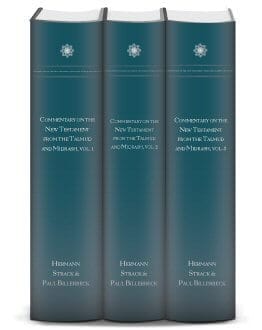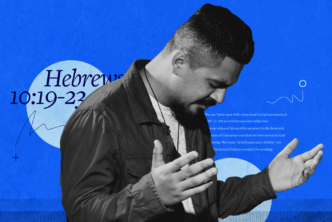Today’s guest post is from Dr. David Instone-Brewer, senior research fellow in rabbinics and the New Testament at Tyndale House in Cambridge. He is an expert on rabbinic literature and curator of the website Traditions of the Rabbis in the Era of the New Testament.
Strack-Billerbeck’s Commentary on the New Testament from the Talmud and Midrash is a wonderful treasury of rabbinic parallels to the New Testament. These parallels are sometimes obvious, sometimes obscure, and almost always interesting.
This is a resource for preachers as well as scholars. Preachers and scholars who want to present a rounded picture of the New Testament Jewish world have everything they need in this collection. Although most of the material was written after the New Testament was finished, it represents the thinking and culture of the Pharisees, as well as Paul’s opponents. The second- and third-century rabbis were not the same as the Pharisees of the first century, but neither group was a monoculture, and the overlap is much larger than the differences.
Paul Billerbeck, the main author of this work, was a lifelong pastor and preacher who collected these parallels in order to enlighten his congregation. He was also an accomplished scholar, whose publications brought him to the attention of the distinguished Berlin professor Herman Strack. Strack encouraged Billerbeck to write a theology of the ancient rabbis, but Billerbeck was more interested in creating a collection of sources that would be useful for preachers and scholars. He arranged them in the form of a commentary, following the example of John Lightfoot two centuries previously.
Although Billerbeck, in his introductions, explains that he merely helped Strack, this wasn’t the case, since Billerbeck was the primary author of this work. However, Billerbeck needed Strack to give credence to his works. Billerbeck, born of Jewish parents, could never have found a publisher without Strack’s help, especially in the increasingly anti-semitic climate of Germany.
Of the commentaries included, the commentary on Matthew is by far the largest, since the other Gospels contain only the material that was not paralleled in Matthew. The epistles are dealt with much more briefly than the Gospels, partly because their background is often Roman, rather than Jewish, and because the rabbinic sources are sadly lacking in theological discussions. They are concerned far more with the minutiae of how to obey the Law in daily life.
Many of the rabbis were like Nicodemus—honestly trying to please God by following the Law. This is why they were so concerned to know how they should live. This collection opens up their world, and helps us to picture the people with whom Jesus spoke, and the rich soil from which Christianity grew.
* * *
You can be a part of bringing this monumental work to the English-speaking world! Pre-order your copy of Strack and Billerbeck’s Commentary on the New Testament from the Talmud and Midrash today!





